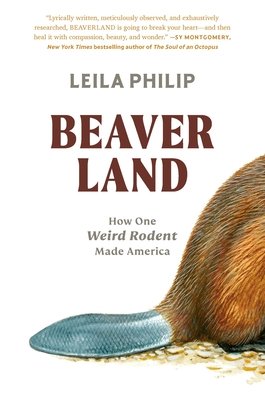
Book Review of Beaverland: How One Weird Rodent Made America
Review of Beaverland: How One Weird Rodent Made America by Leila Philip
When I stumbled upon Leila Philip’s Beaverland: How One Weird Rodent Made America, I couldn’t help but feel drawn into a world I barely understood. The title alone ignited an array of questions about the furry creatures that had piqued Philip’s own curiosity when they mysteriously vanished from a pond near her Connecticut home. As someone who’s thrived on tales of nature and wildlife, I was eager to dive into what I hoped would be an enlightening exploration of beavers and their role in the ecosystem. However, I found myself more often trudging through the text than savoring it.
Philip’s journey begins with her alarm at the disappearance of her local beavers, quickly spiraling into a deep investigation of these curious creatures. Although brimming with intriguing facts and connections to the environment, I found the writing itself—much like a beaver dam—somewhat stagnant. At times, the prose felt dry, and I frequently had to push myself to keep going. Unlike Ben Goldfarb, whose Eager turned the often suppressed life of beavers into vivid storytelling, Philip’s narrative felt more like an academic treatise. Her chronicling of efforts spent in the field with trappers and scientists was informative but weighted down by an execution that lacked warmth.
Throughout the book, I did find glimmers of insight that resonated with both my passion for wildlife and environmental sustainability. Take, for example, Philip’s reflections on beaver intelligence: "But are beavers intelligent creatures? It’s a mystery." This thoughtful musing takes readers beyond mere animal behavior into the realm of understanding and marveling at how beavers fundamentally alter landscapes, similar to the roles of ants or bees in their ecosystems.
However, her extensive focus on trapping created a barrier for me. Trappers like Herb offer an accessible face to the discussion, yet I found myself unable to grasp the motivations behind trapping for fur versus hunting for sustenance. While Philip advocates for context, I couldn’t shake a lingering discomfort regarding the practice. This struck me as a missed opportunity to deepen my understanding of the complications surrounding wildlife interactions in modern America.
On the brighter side, the book is peppered with compelling statistics and observations, such as the dramatic consequences of beaver population decline described by Dr. Ellen Wohl: "the great drying" spurred by the fur trade led to dire environmental changes. It’s sobering to realize how intertwined these creatures are with the health of our ecosystems. Quotes like these underscore the importance of re-evaluating our relationship with nature—transforming what may seem like a dry narrative into a crucial conversation needed for transparency in conservation.
In conclusion, while Beaverland offers an important exploration of beaver ecology and history, it may not captivate every reader in the way it aims to. For those who appreciate a scholarly approach or have a vested interest in wildlife management, there’s certainly value to be found. However, if you are looking for an engaging narrative akin to Goldfarb’s work, you may want to explore other options. Personally, while Philip’s insights add to the broader conversation about our environment, I walked away wishing for more dynamism and storytelling magic that would bring these fascinating creatures to life. Still, my fascination with beavers—those “weird rodents”—remains intact, if not slightly more complicated.
Discover more about Beaverland: How One Weird Rodent Made America on GoodReads >>






